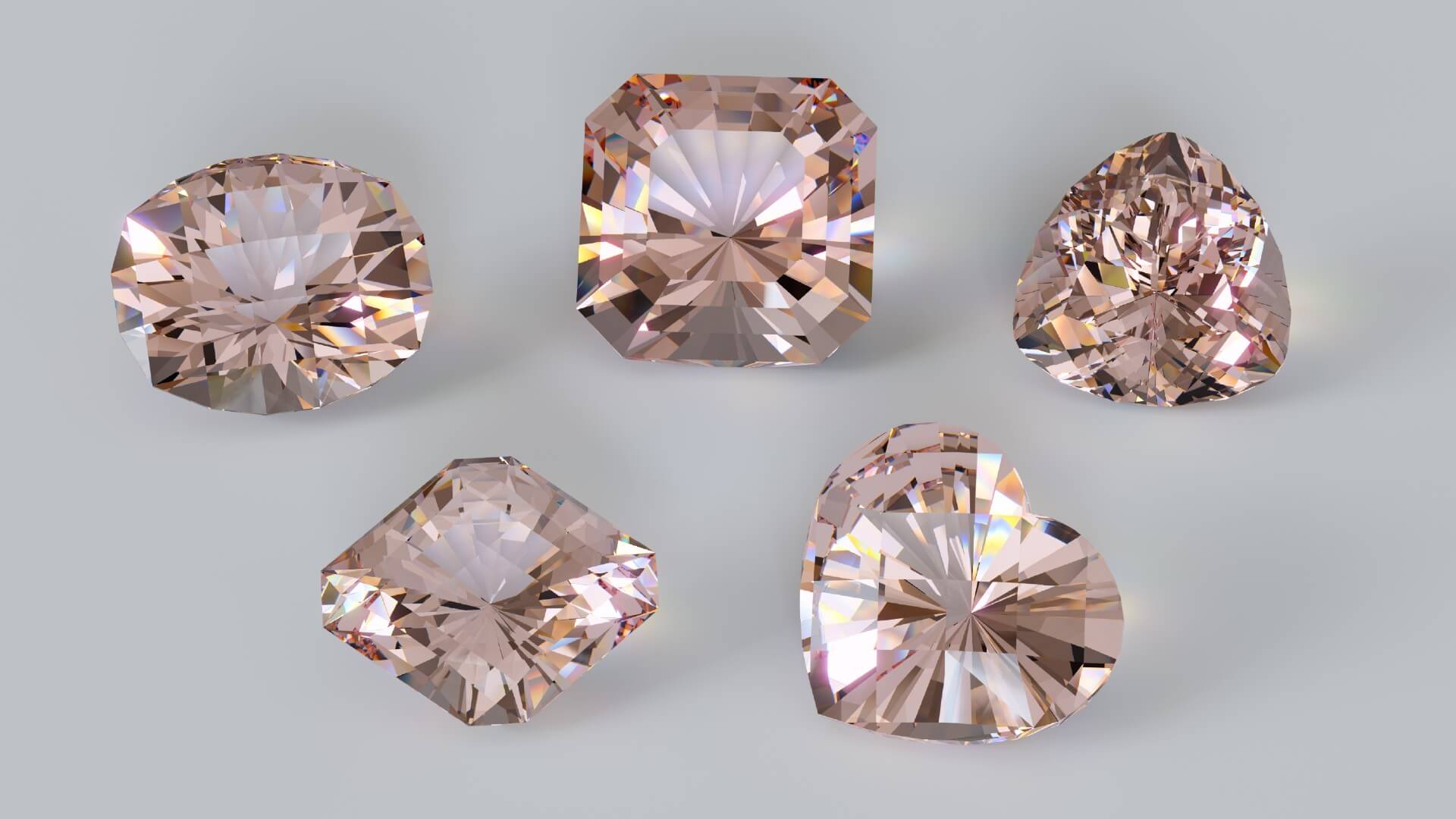Table of Contents
Understanding Diamond Substitutes
What Are Diamond Substitutes?
Diamond substitutes are gemstones that imitate the appearance of diamonds yet vary in organization, value, and origin. While diamonds are valued for their rarity and brilliance, substitutes offer a beautiful alternative for those seeking a similar tasteful without the strong sticker price.
Why Pick a Diamond Substitute?
There are many reasons to consider diamond substitutes. Perhaps you’re on a tight spending plan, or maybe you want a stone that’s ethically obtained. Some people basically incline toward the one of a kind characteristics of substitutes. Whatever your reason, these alternatives can be stunning in their own right!
Popular Diamond Substitutes
Moissanite
Characteristics of Moissanite
Moissanite is a lab-created stone that intently looks like diamonds. It’s known for its exceptional brilliance and fire, often outshining natural diamonds. Moissanite is also durable, ranking 9.25 on the Mohs scale, making it suitable for everyday wear.
Moissanite versus Diamond
While the two stones sparkle beautifully, moissanite has a marginally unique variety tint and more rainbow-like flashes of light, which some individuals adore. Besides, it’s generally more affordable than diamonds, making it an appealing decision for engagement rings and other gems.
Cubic Zirconia (CZ)
Characteristics of CZ
Cubic zirconia is one of the most popular diamond substitutes. It’s man-made and can be delivered in various tones, however the classic clear form copies a diamond beautifully. CZ scores around 8.5 on the Mohs scale, and that means it’s fairly durable yet not as tough as diamonds or moissanite.
CZ versus Diamond
CZ is significantly more affordable than diamonds, however it misses the mark on of the brilliance and durability. Over the long haul, CZ can scratch and lose its gloss, yet with legitimate care, it can remain a beautiful addition to your gems assortment for quite a long time.
Lab Created Diamonds
How Lab Created Diamonds Compare
Lab created diamonds are real diamonds, just made in a lab instead of mined from the Earth. They have the same physical, chemical, and optical properties as natural diamonds. This means they sparkle very much like the real deal however often come at a lower sticker cost.
White Sapphire
Characteristics of White Sapphire
White sapphires are natural stones that can be a fantastic diamond substitute. While they don’t have the same brilliance, they offer a wonderful sparkle and a beautiful, classic look. White sapphires rank around 9 on the Mohs scale, making them very durable.
Sapphire versus Diamond
However they don’t have the same blazing sparkle as diamonds, white sapphires have their interesting charm. They are also typically more affordable and can be a great decision for the individuals who want a more understated look.
Comparing Cost and Value
Value Contrasts Between Substitutes
One of the main draws of diamond substitutes is the expense. Moissanite and CZ can be a fraction of the cost of a diamond, while lab-created diamonds are generally 20-40% more affordable than their natural counterparts. White sapphires also give a spending plan cordial choice, although they may be nearer in cost to bring down quality diamonds.
Resale Value Considerations
With regards to resale value, natural diamonds generally hold their value better than substitutes. Lab-created diamonds have some resale value yet not as much as natural stones. Moissanite and CZ typically have practically no resale value, so remember that assuming that you’re considering a purchase for long haul investment.
Choosing the Right Substitute
Factors to Consider While Selecting a Substitute
Choosing the right diamond substitute involves considering various factors. Here are some important things to think about:
Way of life and Usage
On the off chance that you lead an active way of life or work with your hands, you could lean toward a durable choice like moissanite or lab diamonds. On the off chance that you’re looking for something else for special occasions, a white sapphire or CZ could possess all the necessary qualities.
Personal Inclinations
Do you lean toward the searing brilliance of moissanite, the classic look of white sapphire, or the affordability of CZ? Your personal style and taste ought to play a significant job in your decision.
Caring for Your Diamond Substitute
Cleaning and Maintenance Tips
Caring for your diamond substitute is crucial to keeping it looking its ideal. Regularly clean your stones with gentle soap and water, and avoid harsh chemicals that could damage them. A soft fabric can assist with maintaining their shine.
Storage Recommendations
Store your substitutes separately to avoid scratches. A soft pocket or a dedicated gems box can protect them when you’re not wearing them.
Conclusion: Finding Your Ideal Stone
In the realm of gemstones, diamond substitutes offer a dazzling array of choices for each financial plan and style. Whether you pick moissanite, cubic zirconia, lab-created diamonds, or white sapphire, each stone has its special charm. Ultimately, the ideal stone is the one that resonates with you, accommodates your way of life, and makes you feel fabulous! So take your time, investigate your choices, and partake in the excursion of finding your ideal diamond!

